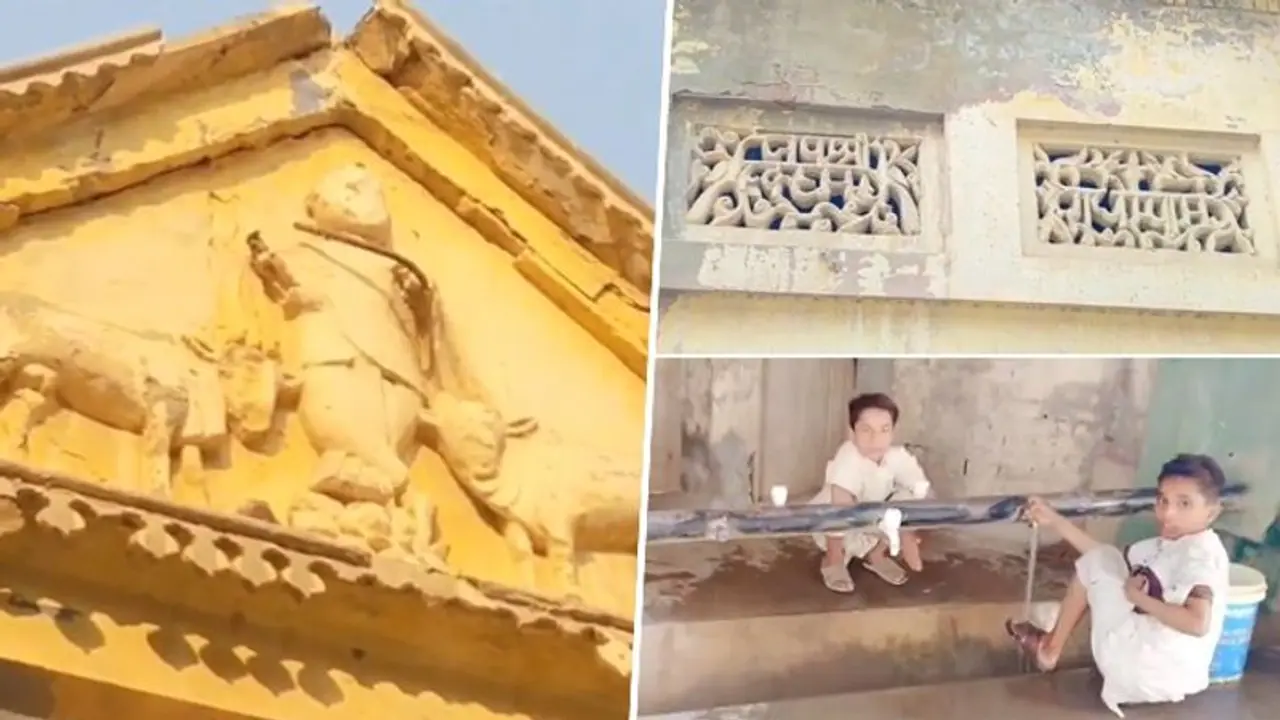In a widely circulated video on X platform, a Qadri linked to a madrassa and mosque in Sadiqabad, Pakistan, shares insights about the site's history, revealing its past as a temple where religious rituals were conducted.
In a recent viral video, concerns have been raised about the conversion of a Lord Krishna temple in Ahmadpur Lumma town, Sadiqabad, Punjab, Pakistan, into a madrassa and mosque. The video features a tour of the premises, showcasing a statue of Lord Krishna at the front of the temple, which has now been defaced, and provides an account of the transformation from a Hindu place of worship to an Islamic educational institution.

The Lord Krishna temple, known for its historical significance, has been a part of the city for many years. The temple, adorned with a statue of Lord Krishna playing the flute along with two cows, stood as a symbol of religious diversity and cultural heritage. However, the conversion has sparked discussions about the preservation of religious sites and the need for interfaith understanding.
According to the video, the main gate of the temple has been closed, signaling a significant shift in the function of the structure. The tour of the converted space was led by a Qadri associated with the madrassa, who explained that the location was previously a Hindu temple where poojas (worship rituals) were conducted. The Qadri affirmed that the site has now been repurposed as a mosque and madrassa for over 50 years, with children studying the Quran within its walls.
During the tour, the Qadri shared his personal history, claiming to have come from India, possibly from the desert region of Rajasthan. He stated, "This was a temple," implying that the structure had Hindu origins. This admission raises questions about the historical narrative and the transitions that cultural and religious sites undergo over time.
The conversion of religious spaces, particularly those with historical significance, raises concerns about the preservation of cultural heritage and the importance of respecting diverse religious traditions. The closure of the temple's main gate and the condition of the Lord Krishna statue at the entrance signal a departure from the site's original purpose, inviting discussions about the protection of religious freedom and the need for interfaith dialogue.
